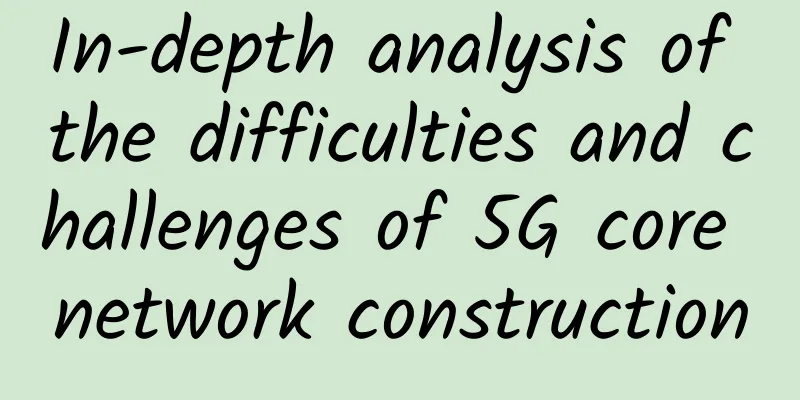Whose encryption key is hardcoded in the code?

|
System design, protocol first. Most people do not understand the design details of the protocol, and tend to use existing protocols for application layer design, such as:
In any case, understanding the principles of protocol design is very helpful for a deep understanding of system communication. 1. Layered design of the protocolThe so-called "agreement" is a rule that both parties abide by, such as a divorce agreement or a ceasefire agreement. An agreement has three elements: syntax, semantics, and timing:
Voice-over: The following text mainly talks about grammar design. Protocol design is usually divided into three layers: application layer protocol, security layer protocol, and transport layer protocol. Let’s take a look at how to select the protocols for these three layers. 2. Application layer protocol designThere are three common application layer protocol selections: text protocol, binary protocol, and streaming XML protocol. (1) Text Agreement A text protocol refers to a communication transmission protocol that is "close to human written language expression". A typical protocol is the HTTP protocol. An example of an HTTP protocol request message is as follows: GET / HTTP / 1.1 The characteristics of the text protocol are:
(2) Binary protocol A binary protocol is a binary protocol, typically the IP protocol. The following is a diagram of the IP protocol: Binary protocols generally include: Generally include:
The characteristics of the binary protocol are:
This is an example of a typical 16-byte binary fixed-length header: //sizeof(cs_header)=16 in: (1) The first 4 bytes represent the version number; (2) The next 4 bytes represent the magic number magic_num, which is used to solve the problem of data misalignment or packet loss; Voice-over: For example, the magic number is agreed to be 0x01020304. If the received message matches the magic number, it is considered to be a normal message. Otherwise, it is considered to be an abnormal message and the connection is disconnected. (3) The next 4 bytes represent the command number. Different command numbers correspond to different variable-length packets. (4) The last 4 bytes represent the length of the packet body, which determines how many bytes the variable-length packet body has; This is an actual binary variable-length package body: message CUserLoginReq { It uses Google's Protobuf protocol, which is easy to see:
PB is a very popular binary variable-length packet protocol with the following advantages:
Streaming XML protocol Streaming XML seems to be a special case of text protocol, and can also be regarded as a separate category. For example, xmpp is a typical streaming XML protocol. The following is a typical message of the xmpp protocol: < message From the XML tags, we can roughly judge that this is a chat message sent by Romeo to Juliet. The XML protocol has several characteristics:
3. Security layer protocol designIn addition to using SSL, there are three common solutions for implementing the security layer protocol by yourself. Voiceover: SSL key management is a problem. (1) Fixed key The server and the client agree on a key and an encryption algorithm (for example, AES). Each time before the client sends a message, it uses the agreed algorithm and key to encrypt and transmit it. After the server receives the message, it uses the agreed algorithm and key to decrypt it. Voice-over: Security is low, and security is based on the professional ethics of programmers. (2) One person, one password In simple terms, a person's key is fixed, but different for each person. Common implementation methods are:
(3) One-time pad That is, dynamic keys, one session one key, which is more secure, and keys are negotiated before each session. The key negotiation process requires two random asymmetric key generation and one random symmetric encryption key generation. The specific details are not expanded here. 4. Transport layer protocol designThe optional protocols are TCP and UDP. TCP is basically used now. With the advent of technologies such as epoll, multiple connections are no longer a bottleneck, and there is no problem with hundreds of thousands of connections on a single machine. |
<<: What is 6G and when can we expect it?
>>: Let’s talk about the technological advances needed to realize the 6G vision
Recommend
DiyVM: 499 yuan/month Hong Kong Shatin server, L5630*2/16G memory/120G SSD hard disk/5M CN2 line
DiyVM is a Chinese hosting company founded in 200...
CMIVPS: $863.5/year-E5-2620*2, 32G memory, 480G SSD, 30M bandwidth, Hong Kong server promotion
CMIVPS yesterday launched a 50% discount on the a...
How blockchain can change the way SMEs conduct business
As the application of blockchain technology incre...
The impact of blockchain on data centers and cloud computing
Today, more and more applications are causing the...
Four questions to help you understand what DCIM is?
[[126709]] Question 1. What is DCIM? DCIM stands ...
iWebFusion: US servers start at $49/month, high-end servers start at $219/month (Dual E5-2699v4/384G/1T NVMe/25TB)
iWebFusion (also known as iWFHosting) is a subsid...
Programmers' comments on Singles' Day: What is honey to others may be poison to me
In 2016, Tmall’s single-day sales record was 120....
Exclusive interview with Li Xiaodong from DYXnet: Using SASE to strengthen network boundaries and provide “cloud-edge-device” security empowerment
In today's digital age, the stability and sec...
Quantum network achieves key breakthrough: based on quantum entanglement theory
[[248944]] The new network is based on the theory...
What was the Internet like 20 years ago? Reminiscing about the Internet's heyday
For the younger generation, they are born in a ma...
In the 5G era, how to innovate network construction models?
The full opening of the 5G commercial era and the...
"Rehabilitate" the Ethernet all-optical network! China Construction Association publishes the first standardization document for smart park construction
"Smart Park" is not a new concept. In t...
Are enterprises ready for open RAN?
The increasing deployment of 5G has brought about...
[Black Friday] DediPath: Dedicated servers in multiple data centers in San Jose/Los Angeles/New York/Dallas starting from $39/month
A few days ago, we shared the Black Friday VPS pr...
Chip shortages, edge computing and IoT will drive IT transformation in 2022
Forrester Research pointed out in its research th...








![[11.11] Hostons: AMD Ryzen+NVMe series VPS 50% off starting at $2/month, multiple data centers in Los Angeles/Salt Lake City/Portland, etc.](/upload/images/67cabd0fb889e.webp)
